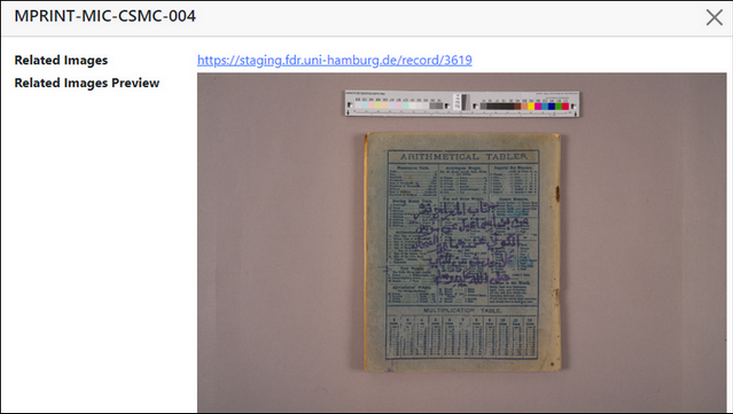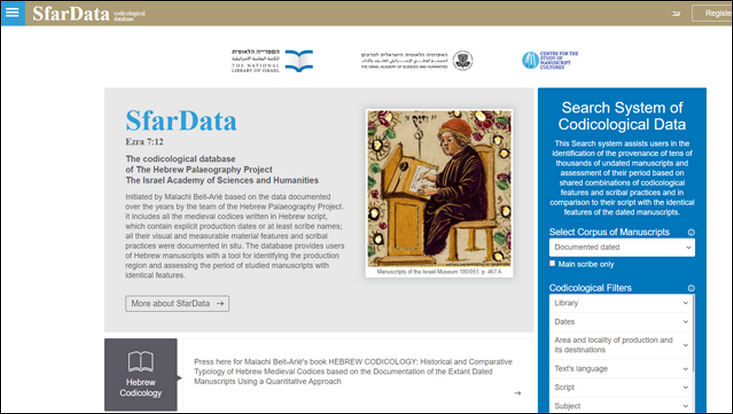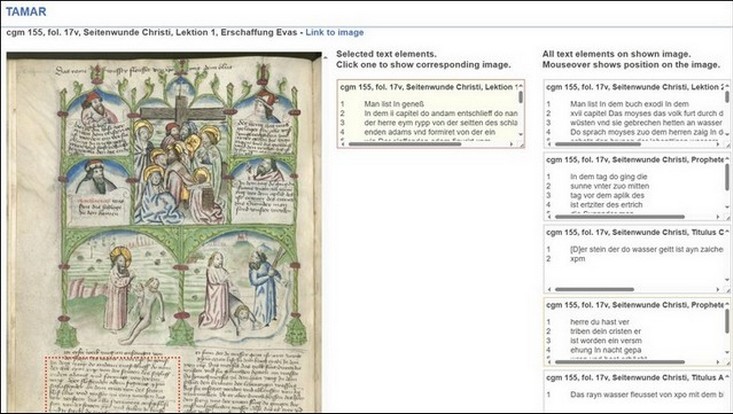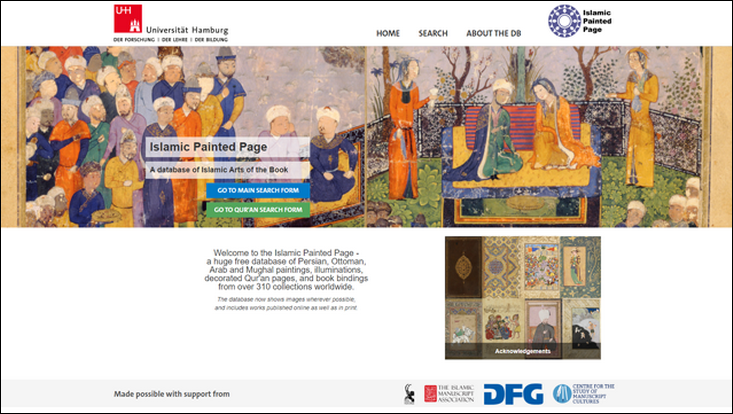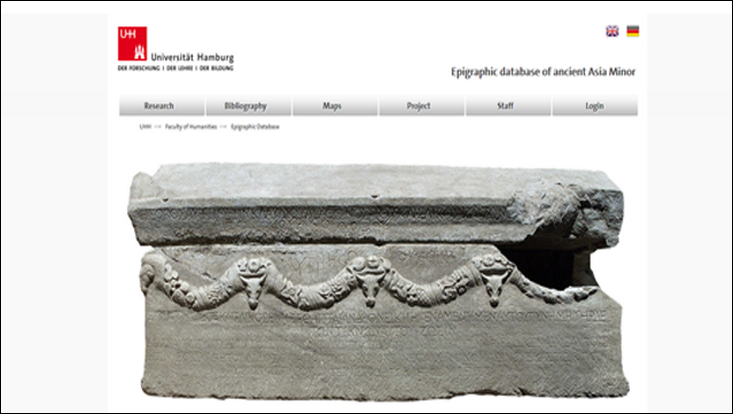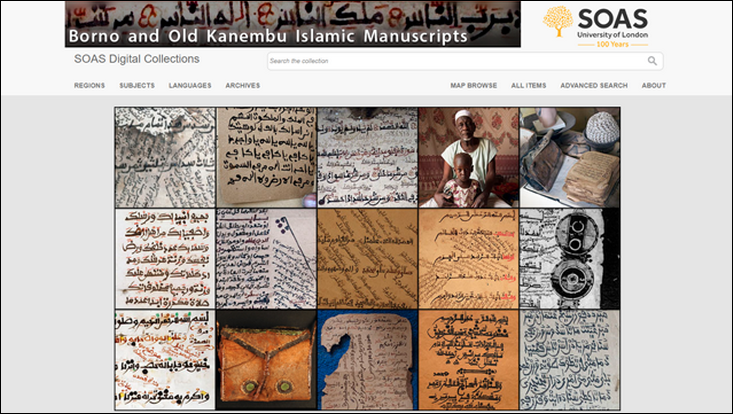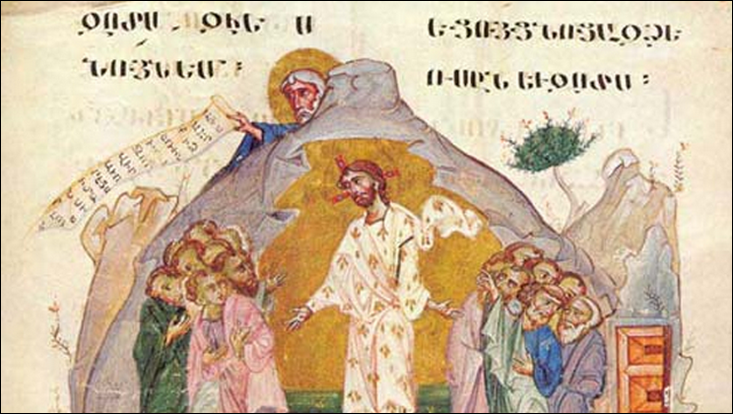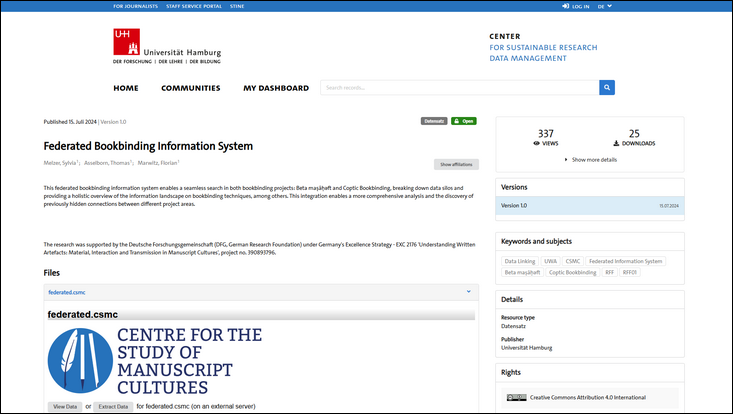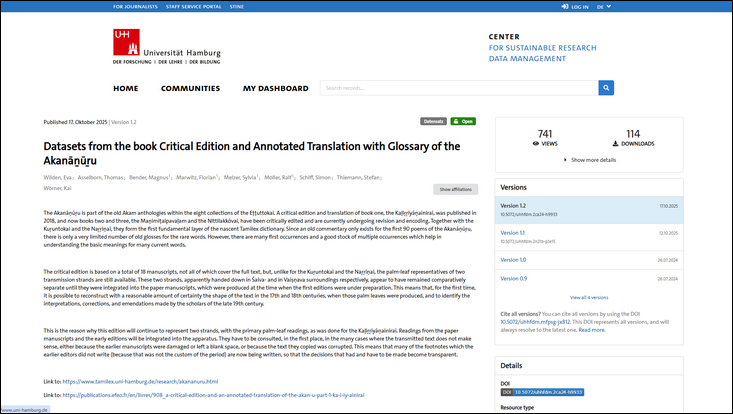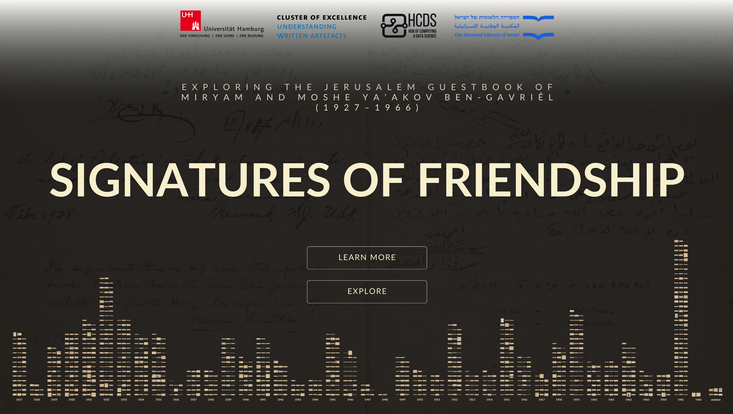Research Data and Information Systems
The various projects at the Centre for the Study of Manuscript Cultures yield a wealth of research data from both the humanities and the natural sciences. Research data, in this context, can apply to almost any form of data relevant to the study of written artefacts. CSMC strives to make as much data as possible available for open access via the Research Data Repository of Universität Hamburg. The nature of this data ranges from digital images and 3D scans of written artefacts to the raw data and results of material analyses and multispectral imaging. The use of DOI and long-term storage policies ensure an easy navigation of the data objects in the repository. In addition, the repository holds a multitude of CSMC’s various publications. However, some data objects may be either restricted or not accessible due to legal or other concerns.
Click here to access the the collection of all research data made available by CSMC.
Data Management
Dataset Provision and Citation in the Digital Age
At the CSMC and UWA, scholars work together with computer scientists to adapt generic viewers to project-specific requirements or develop project-specific viewers of datasets. Scholars can generate archives (so-called CSMC files) for their data acquired in their scholarly work. CSMC files can then be submitted to RDR by scholars with project-specific views on data shown on the web right from the RDR system of the University of Hamburg.
Visit Advanced Dataset Provision and Citation in the Digital Age
Information Systems
MprinT Information System
A central aim of MprinT is to provide access to source materials that shed light on the evolution of Islamic textual culture along the Swahili coast, and to trace the transmission of these documents, both in print and through oral tradition. The online information system provides researchers with a wide range of sources. It includes valuable information on the age and provenance of written artefacts. High-quality images of the manuscripts, which are linked to the University of Hamburg’s Research Data Repository, enable users to explore selected documents in detail. An interactive map will allow for precise geographical visualisation of the written artefacts once geo-coordinates are available in the data set.
Sfardata
The codicological database of The Hebrew Palaeography Project at the Israel Academy of Sciences and Humanities. Initiated by Malachi Beit-Arié based on the data documented over the years by the team of the Hebrew Palaeography Project. It includes all the medieval codices written in Hebrew script, which contain explicit production dates or at least scribe names; all their visual and measurable material features and scribal practices were documented in situ. The database provides users of Hebrew manuscripts with a tool for identifying the production region and assessing the period of studied manuscripts with identical features.
TAMAR (Transcriptions and Annotations for Manuscript Research)
TAMAR is a collection of working transcriptions of selected passages from Biblia pauperum manuscripts, which are stored as a dataset in the research data repository of the University of Hamburg and can be visualised in a browser. The application is intended to facilitate work with the Biblia Pauperum in both research and teaching: It visualises transcriptions from the Biblia pauperum in direct connection with the digitised version of the respective manuscript page, allowing researchers to trace how the visual organisation of the pages changed over time, especially with regard to their transmission in multiple-text manuscripts. Moreover, TAMAR allows students to engage in scholarly work on medieval literature and art and to develop palaeographic skills.
Islamic Painted Page (IPP)
The Database covers examples of the painted page dating from about 700 to 1900 CE from all over the Islamic world. Persian painting and Ottoman painting are especially widely covered but Arab, Sultanate, Mughal and other sources are all included. The Database includes illuminations, decorated Qur'an pages and book bindings as well as figurative paintings in manuscripts, albums and on single pages.
Epigraphische Datenbank zum antiken Kleinasien (EDAK)
The EDAK (Epigraphische Datenbank zum antiken Kleinasien) project of the Department for Ancient History at the University of Hamburg aims to collect the widespread published Greek and Latin inscriptions of the regions of modern Turkey and to present them in a database with a short description and a commentary. Currently the database contains more than 6000 inscriptions of ancient Lydia, Galatia, Paphlagonia, Phrygia and Proseilemmene. The work for adding further regions is in progress.
Borno and Old Kabenbu Manuscripts
The digital collection of Borno and Old Kanembu manuscripts provides an online access to one of the earliest written sub-Saharan languages in manuscript form. Old Kanembu written in Arabic script was a language of Qur’anic interpretation in the ancient Borno Sultanate. It has survived in marginal and interlinear annotations in the early Qur’an manuscripts dating from the 17th to 19th centuries and in various other religious texts dating from the 19th century to 1980’s. The content of the collection is being constantly updated and some items have more detailed metadata than others.
Index of Armenian Art: Database of Armenian Manuscript Illuminations
The database of Armenian Miniatures, the first part of the Index of Armenian Art, features a chronological database of Armenian manuscripts, each of which is accompanied by a collection of color slides. The web version of the database was created by Dickran Kouymjian and has been partially supported by grants from The Bertha and John Garabedian Charitable Foundation, Fresno, California.
FedBook
In humanities research, scholars study written artefacts such as manuscripts to analyse aspects like language, content, and provenance. Projects such as the UWA project RFE09 "Bookbindings as Instruments of Classification" , which examined Egyptian bookbindings as tools of classification, and Beta maṣāḥǝft at the Hiob Ludolf Centre, which documents Ethiopian and Eritrean manuscripts, illustrate this diversity of approaches. However, due to limited quantitative data, some research questions cannot be verified precisely. Our system enriches research data from RFE09 with other data by linking such projects through a federated database system. This approach allows missing variables, such as dimensions or material details, to be supplemented, improving research accuracy.
Datasets from the book Critical Edition and Annotated Translation with Glossary of the Akanāṉūṟu
The Akanāṉūṟu is part of the old Akam anthologies within the eight collections of the Eṭṭuttokai. A critical edition and translation of book one, the Kaḷiṟṟiyāṉainirai, was published in 2018, and now books two and three, the Maṇimiṭaipavaḷam and the Nittilakkōvai, have been critically edited and are currently undergoing revision and encoding. Together with the Kuṟuntokai and the Naṟṟiṇai, they form the first fundamental layer of the nascent Tamilex dictionary. Since an old commentary only exists for the first 90 poems of the Akanāṉūṟu, there is only a very limited number of old glosses for the rare words. However, there are many first occurrences and a good stock of multiple occurrences which help in understanding the basic meanings for many current words.
Signatures of Friendship: Exploring the Jerusalem Guestbook of Miryam and Moshe Ya’akov Ben-Gavriêl (1927–1966)
The Jerusalem home of the artist couple Miryam and Moshe Ya’akov Ben-Gavriêl was a place of cross-cultural gatherings, intellectual encounters and artistic events. From the time they emigrated from Vienna to Mandatory Palestine in 1927 and until the husband’s death in 1965 the two dedicated hosts kept a guestbook which recorded – in many forms and languages – hundreds of visitors. Today, it is held in the Moshe Ya’akov Ben-Gavriêl Archive at the National Library of Israel.

